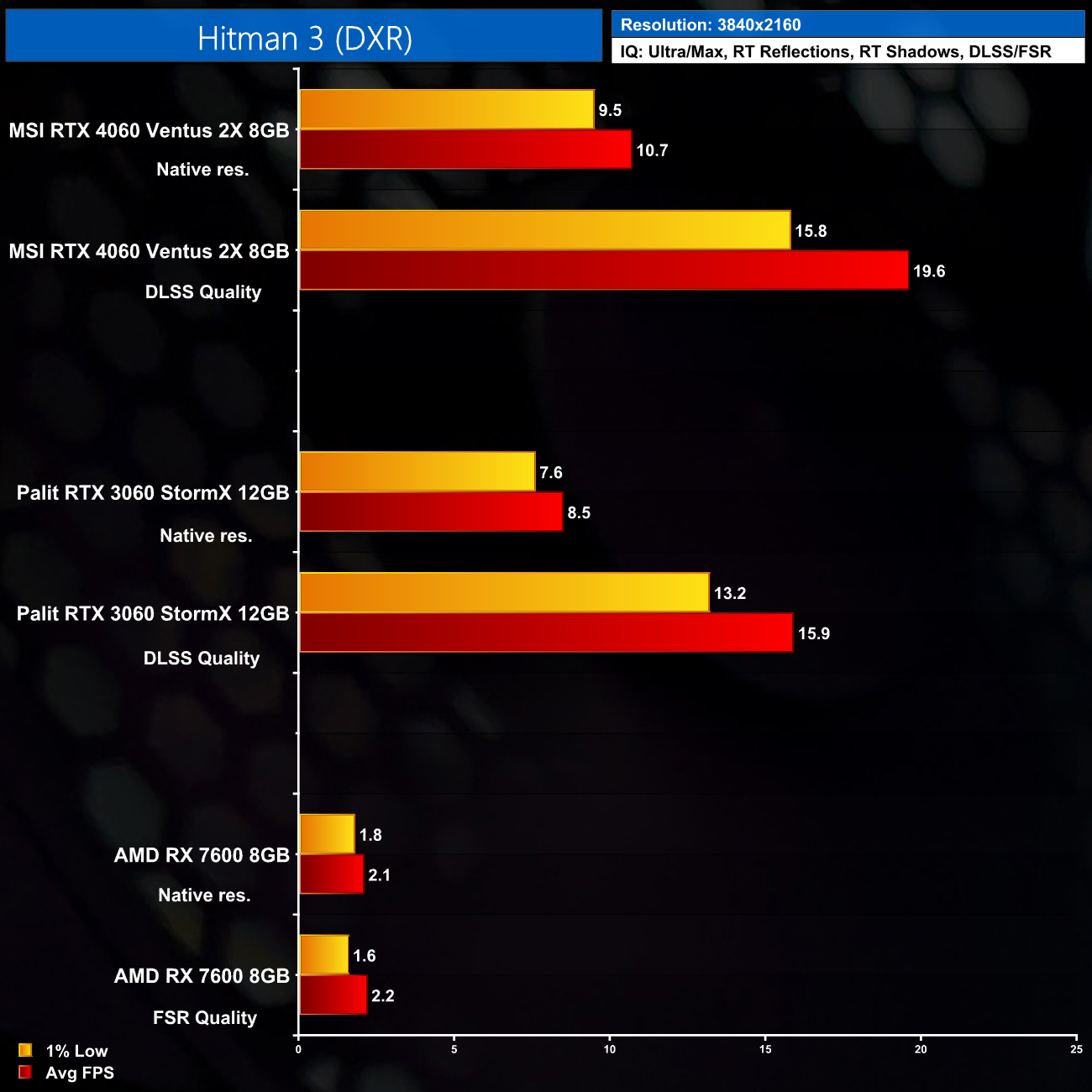Here we re-test three titles using both DLSS 2 and DLSS 3, to give you an idea of the performance on offer from Nvidia's upscaling technologies.
Cyberpunk 2077 has always scaled very well when enabling DLSS 2 Super Resolution, and things are no different here. At 1080p the RTX 4060 gets a 74% boost to its average frame rate, bringing it from a 30FPS experience to one just shy of 60FPS, making it far smoother overall.
Even then, at 1440p DLSS 2 isn't enough to get the 4060 to hold above 30FPS, with the 1% lows just a hair below that baseline.
DLSS 3 Frame Generation is another feature worth testing, where we look at enabling Frame Generation on its own, and then with the technology used in conjunction with DLSS 2 Super resolution. Frame Gen on its own gives a boost up to 55FPS, so it's broadly as performant as DLSS 2 Quality mode, though the latency is noticeably higher (77.6ms with Frame Gen compared to 36.7ms with DLSS 2 Quality.) Enabling both together reduces latency to 52.3ms, so that's slightly better than native, but with the frame rate boosted up to 88FPS.
Next is Hitman 3, where DLSS 2 Quality mode brings a very healthy 56% boost to frame rates, once more taking the RTX 4060 from a sub-30FPS experience and bringing the 1% lows to 47FPS. It's still not enough to get the 4060 over the 30FPS line at 1440p when using max ray tracing settings, but a couple of tweaks to the settings should make it workable.
Hitman 3 also supports DLSS 3 Frame Gen, with similar scaling when compared to Cyberpunk 2077. Using just Frame Gen on its own sees the frame rate hit 59FPS, so it's slightly faster than DLSS 2 Super Resolution, albeit with double the latency. Frame Gen plus DLSS Super Resolution brings latency to just below native figures, while the frame rate is well over double what we get without any form of AI upscaling.
Lastly we have Spider-Man Remastered, where DLSS 2 Quality provides a smaller boost of around 30% at 1080p, though that is still welcome. That increases to a 44% uplift at 1440p, but we can clearly see the 1% lows aren't quite as tight as with the RTX 3060 – another example of VRAM limits just starting to reduce performance. It's only slight, but it is noticeable.
 KitGuru KitGuru.net – Tech News | Hardware News | Hardware Reviews | IOS | Mobile | Gaming | Graphics Cards
KitGuru KitGuru.net – Tech News | Hardware News | Hardware Reviews | IOS | Mobile | Gaming | Graphics Cards













